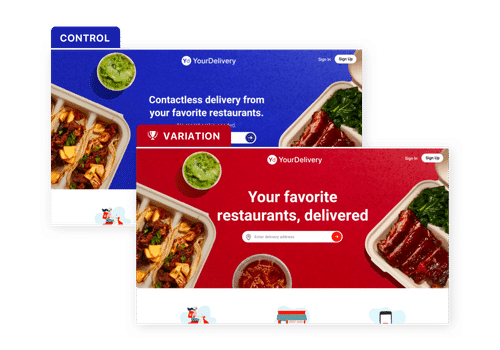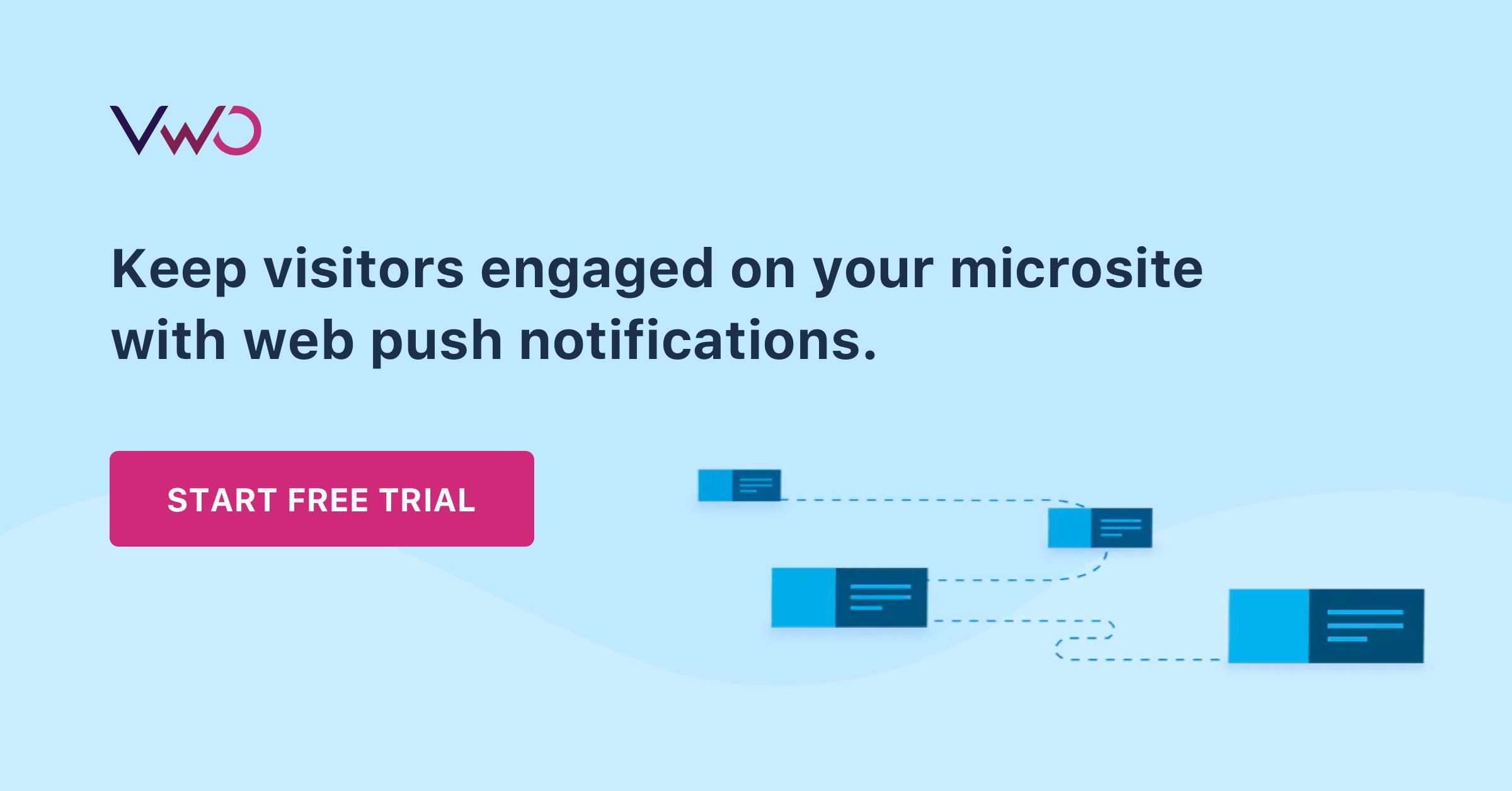What is a Microsite: Definition, Examples, Benefits, and How to Create One
Note: This article has been recently updated.
Are you hitting diminishing returns with your website’s traffic growth? Perhaps it’s a sign that your well-oiled marketing strategy needs a new spice of life.
Why not try building a highly-engaged microsite?
After all, creating focused content for the web is the most sought-after practice today to engage your audience, which otherwise meanders in a noisy, distracting, and highly competitive world of online marketing.
Download Free: A/B Testing Guide
If you are a marketer or a brand and want to upscale your web traffic, the concept of microsite marketing would certainly allure you.
Let’s go one by one and dive deep into each aspect of a microsite.
What is a microsite?
A microsite is a branded content site that companies use to promote their individual products, events, or campaigns.
These are hosted on their own domain or company website’s subdomain and have a different URL than their company websites.
These are usually non-application-based sites. They would not have eCommerce (like most Shopify competitors offer) functionality or an elaborate sales funnel.
Instead, they are information-laden sites, aimed at engaging as many users as possible. The content on their page(s) is invariably fun and interaction-based. This helps their brand connect with users.
Furthermore, they do not provide any information about the parent brand (or company). They do not contain web pages like “About Us,” “The Team,” etc.
Why are microsites needed: The importance of microsites
Microsites are essential while executing different marketing plans and achieving goals. Here are the cases where you need a microsite.
a. Launching a new product
Whenever a new product is ready for launch, a ton of promotional campaigns are carried out to generate interest and curiosity about it, among potential customers.
These campaigns typically include print media promotions, exhibitions, social media and email campaigns, and more.
The audience of these campaigns, which is interested in knowing more about the product, can be redirected to a microsite that has all the information about the product.
The microsite will influence and educate visitors further by offering detailed and engaging multimedia content. And since the microsite is completely branded with the product’s characteristics, it will help the audience recall the product more.
b. Generating targeted leads
You can use microsites to capture those leads who already show an interest towards your product (or service). Such leads have a greater chance of converting into customers.
Microsites can be a great medium for you to get quality leads.
For example, Audi India effectively uses this strategy to capture leads for its range of cars in the country. It uses the microsite: auditestdrive.in.
Audi India taps those web users who have already indicated an intent to take a test drive of one of its cars. It does that by running ad campaigns on search engines, around the keyword “audi test drive” or “audi <car name> test drive.”
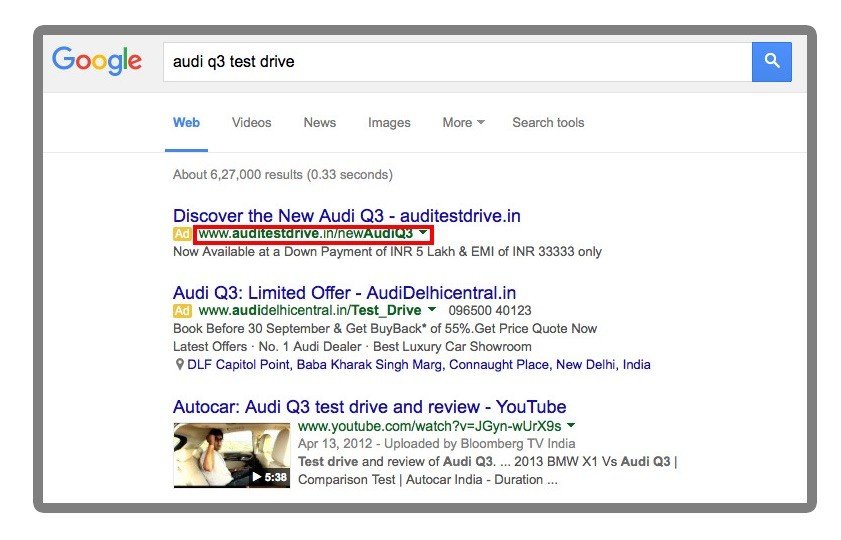
Once users click on the ad, they are directed to the microsite. The microsite has a minimalistic interface, including a single web page with an enquiry form.
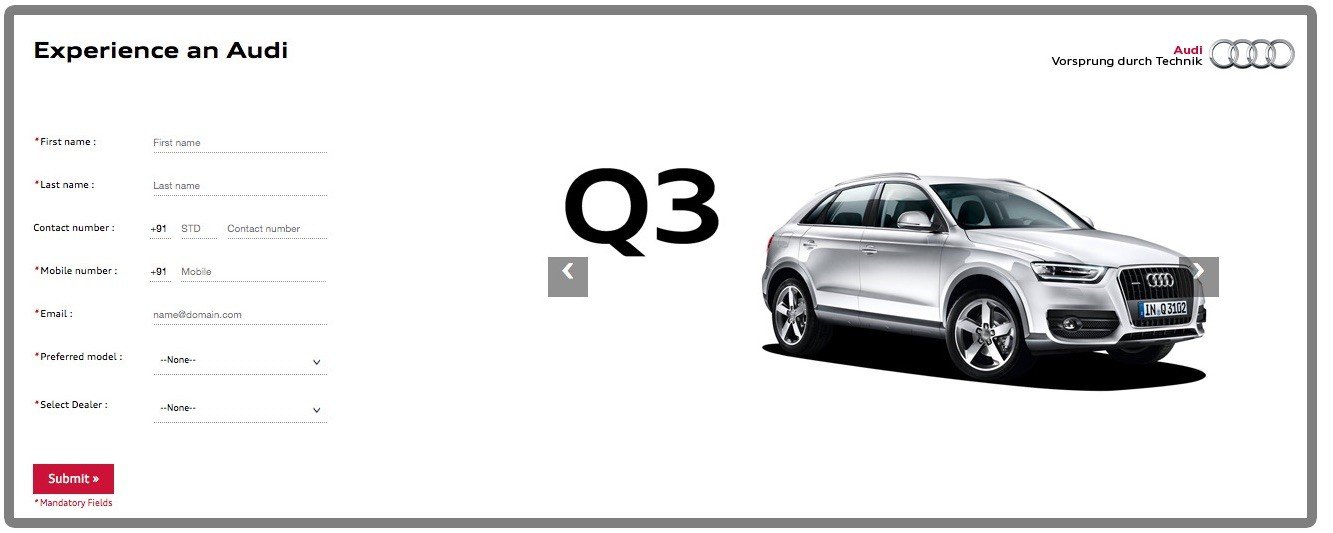
c. Targeting market by geography
If your business is spread around different geographies, microsites can help you find users from the locations individually. With microsites, you can target users that are looking for products in a specific geography.
I’m going to take Audi as an example, again. Here, the campaign is aimed at capturing leads specific to a geography. The company runs ad campaigns that direct users to the location-specific microsite, for users searching “Audi” on search engines.
Here’s a screenshot from the microsite:

Here’s a screenshot from the microsite:

d. Standing out from the corporate brand
There are many brands that do not blend well with the look and feel of their parent companies’ websites. Such brands need their own microsites, which display their individual values and characteristics.
Microsites give freedom in designing a brand-specific experience.
The UI and UX of a brand’s microsite can be designed on the basis of how the brand is perceived by people.
e. Promoting events
There are several types of physical events and marketing campaigns that companies regularly organize to enhance their brand presence (or simply, generate business).
You can host the details and registrations about an event on a microsite. Unlike a corporate website, microsites will allow you to be as elaborate as required.
Microsites can be a perfect platform for the promotion of physical events.
Here is an example of a microsite about a marathon-running event conducted by TCS.
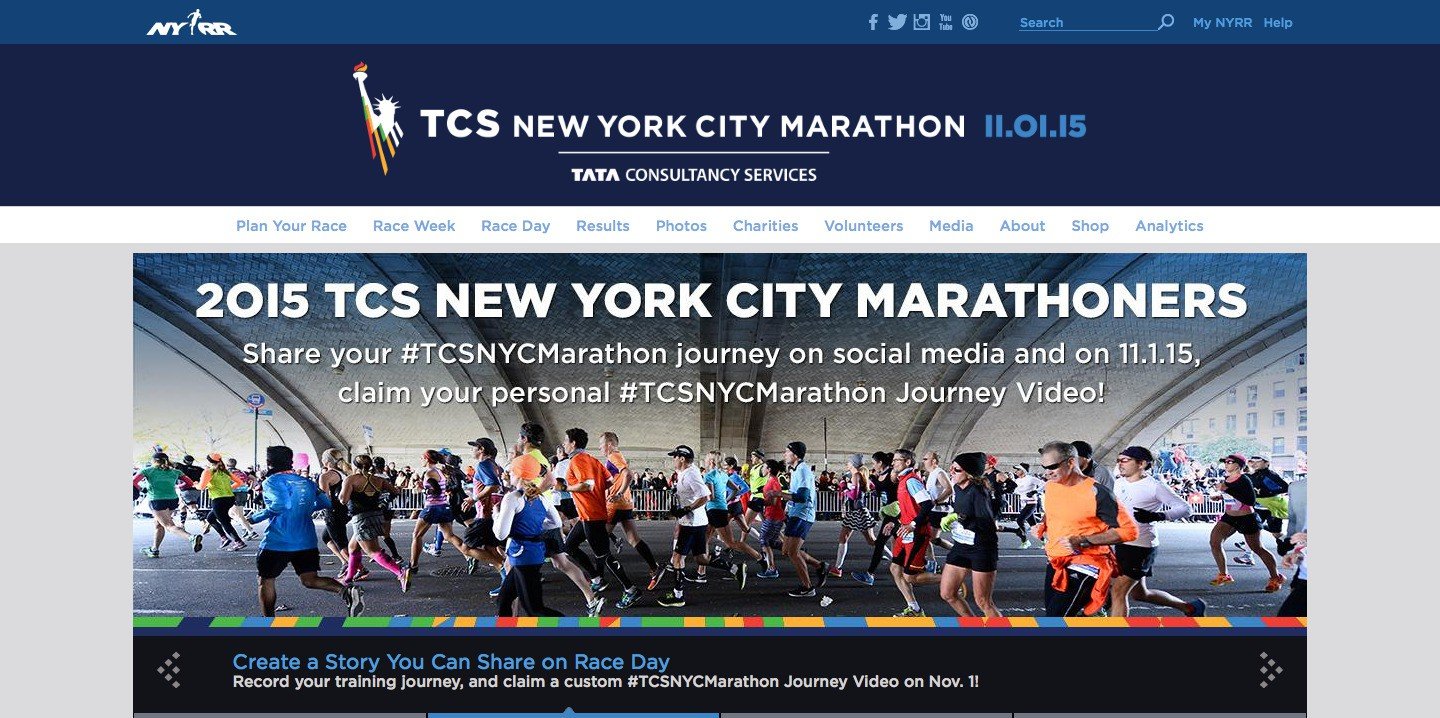
Examples of microsite
a. BMW
Let’s take one of the best microsite examples to understand the concept better.
BMW has a microsite dedicated to its X-series cars for users in India.
The BMW microsite has its own domain (and is not hosted under a sub-domain or a sub-directory of the main BMW website).
As soon as the microsite loads, it greets users with a racy, adrenaline-pumping video featuring an X-series car. The video effectively demonstrates the car’s unique features — imposing road presence and sheer power. It engages the users, and with that, establishes the brand value of the car (or the series).
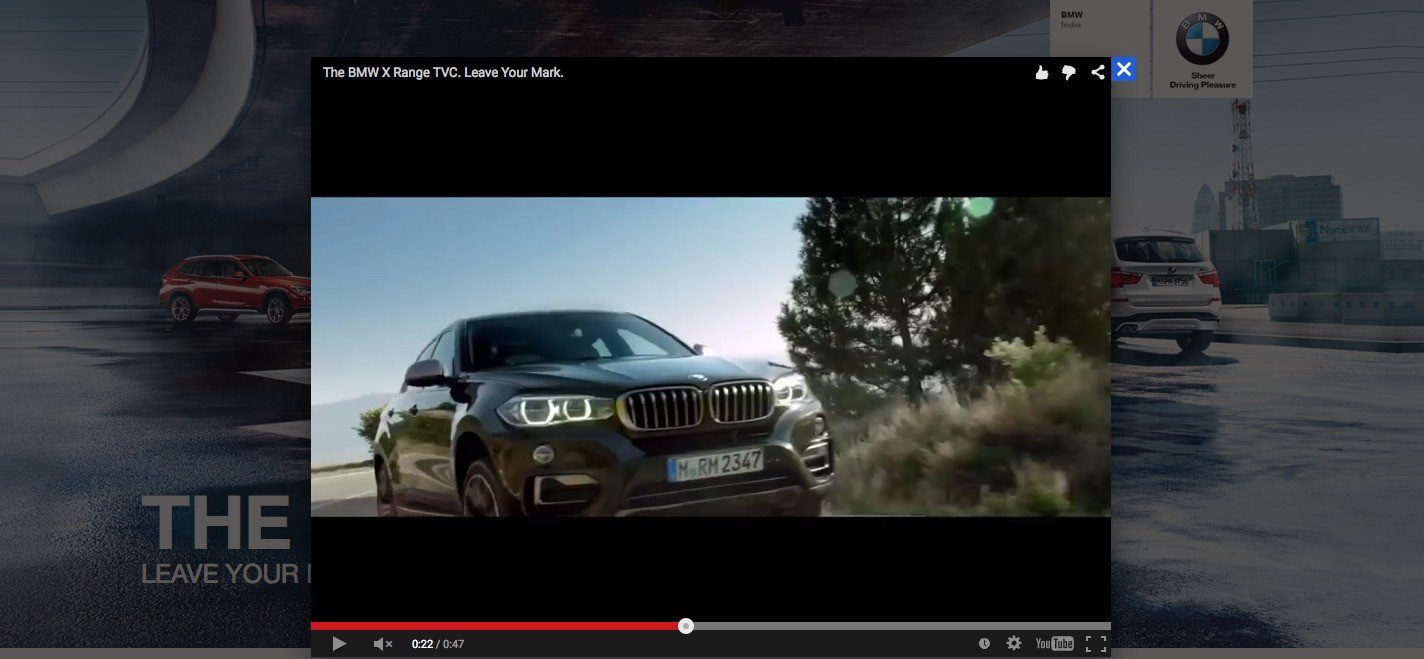
As we move down on the site, we find a bunch of tweets from users that mention a common hashtag. The hashtag is a part of BMW’s social campaign, as mentioned in the image above the tweets. The “tweets from users” is also an interesting read on what other people are talking about the BMW X-series. This keeps the users engaged further.
Its content sticks closely with the brand in focus.
b. Adobe CXM
Here is one example of a B2B microsite.
Adobe created this microsite to let visitors experience the powers of Adobe CXM and the benefits it delivers to the brand.
The microsite is interactive and has a compelling design with a single CTA. The page is filled with statistics and experts’ take on CXM to make it data-rich and trustworthy.
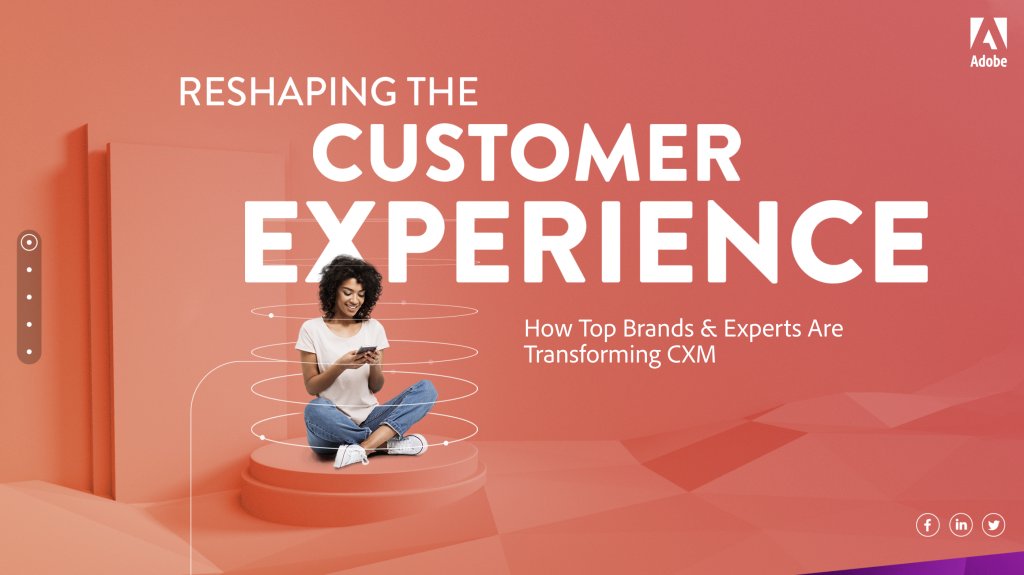
The copy for the microsite is crisp and informative, which must have been designed to counter low scroll depth and bounce rate.
The microsite allows Adobe to inform its users about CXM in an engaging way, which is not possible via the main website.
Benefits of a microsite
Here is how marketing-driven organizations can benefit from microsites.
a. Target specific audience
Microsites allow brands to deliver highly targeted content to specific segments of their audience. Brands can tailor their content for different customer groups. This targeted approach enables brands to engage their audience more effectively and deliver personalized experiences.
b. Better lead generation rate
Microsites have a better lead generation rate, as they cut the clutter and focus on sharing information related to a particular campaign. By presenting a clear and concise message without distractions, microsites capture the attention of visitors and keep them engaged, increasing the chances of conversion. This focused approach drives higher quality leads directing to better campaign performance and greater success in achieving lead generation.
c. Increase brand awareness
Microsites help brands establish their brand presence on the internet through their own dedicated web space. By creating a separate microsite for a specific campaign or initiative, brands can showcase their unique identity, messaging, and visual branding elements in a targeted manner. It helps brands differentiate themselves from competitors and enhance their online visibility, ultimately strengthening their overall brand presence on the internet.
d. Improve virality potential
Microsites can create buzz and word-of-mouth publicity. With interactive elements, multimedia presentations, or exclusive behind-the-scenes insights, microsites can capture the attention and interest of visitors. The captivating content becomes shareable, encouraging users to spread the word and generate organic publicity through social media, online forums, and other channels.
e. Better SEO for niche keywords
Businesses can optimize their visibility in search engine results by curating the content of microsites to align with specific keywords. The microsite is like a hub of information for specific keywords, which allows better ranking on SERPS.
f. Easy to manage
As microsites are created for a targeted campaign, only a small group in your company can dedicatedly work on that.
This way you will be able to manage a smaller team better, which is cost, energy, time, and resource-effective.
Download Free: A/B Testing Guide
Disadvantages of microsites:
With so many advantages of microsites, it’s almost irresistible to have one of your own.
However, there are two sides to the story. Microsites have big disadvantages, too.
Find them below.
a. Leave users confused
The users, who are your target audience, don’t make a note of the brand URL that they just stumbled upon and visit it later when they have time. However, they might just remember something out of the ad and then probably Google it, which would take them to the main site.
You see. The effort is lost; purpose defeated.
Many brands assume that their users are decently adaptive to the different user interfaces, which harms the user experience. It can leave them confused and they would probably never visit your site again.
b. Huge costs
A microsite is essentially building a new website. When building a website from scratch, there are various expenses involved.
The cost of website-domain, cost of maintenance, and cost of developers and designers are just to name a few. And the more elaborate a microsite is, the higher its cost will be.
c. Content development efforts
Since the main goal of microsites is to engage users, the site’s content has to be top-notch. The text content, images, videos, and user-generated content that goes into a microsite must relate to the audience, the brand, and search engine optimization (SEO) strategies.
d. Significant time commitment
A successful microsite is not a one-time setup thing. It has to be updated with content regularly, during the whole duration of its marketing campaign.
e. Short life-cycle
Once the marketing campaign associated with a microsite ends, the microsite is practically abandoned. The resources invested in developing the microsite go under-utilized.
Be sure to weigh up the pros and cons of building a microsite for your brand. If you proceed, don’t forget to maximize ROI by A/B testing your content, features, and functionality.
How to create a microsite?
Here is a step-by-step process to create a microsite:
- Define the purpose for the microsite like a product launch, specific campaign, or yearly event, and set goals that it should achieve like brand awareness, generating leads, etc.
- Determine the visual sitemap, information architecture of the website, and the number of people and departments that need to be involved
- Draw wireframes considering the goal, and user experience.
- Develop the microsite on CMS or any suitable platform. Test the website for its functionality and responsiveness
- Create compelling and engaging content for the microsite which is optimized for SEO and brand guidelines. Push the microsite live.
- Integrate website analytics tools and experimentation tools to track visitor behavior and optimize conversion.
- Promote microsites on channels like social media, the main website, newsletters, PR, etc.
- Regularly monitor the microsite for key performance indicators (KPIs) and any performance issues.
Difference between a microsite, a landing page, and a website
| Evaluation Parameter | Website | Microsite | Landing Page |
| Purpose | A website is a comprehensive hub for all brand-related information. It has blogs, and multiple pages to showcase the product and offerings. | A landing page is a standalone webpage created with the sole aim of improving conversion by reducing distraction. | A landing page is a standalone webpage created with the sole aim to improve conversion by reducing distraction. |
Duration | A website is always kept live. However, it is merged or migrated based on business decisions. | A microsite has single or multiple pages. It is designed with a specific campaign in mind, such as generating high-intent leads for an upcoming event. | Landing pages are archived if created for a specific campaign or kept live forever if they are an evergreen resource page or a lead-generating medium. |
| Target audience | A website targets a broad customer base. | Microsites are tailored specifically to segments of the customer base. | Depending on the business goal, landing pages are created to target specific segments or a broad customer base. |
Microsites and the SEO debate
In the past, many businesses exploited microsites as a tool for SEO, greatly. They used to run multiple microsites that were developed around different keywords, giving them a chance to appear on top of different search engine result pages. It also gave them a chance to appear more than once (or twice, at times) on a single result page.
Their other objective of creating multiple microsites was to provide backlinks to a primary website. The backlinks would help improve the SEO ranking of the main website.
However, this does not happen anymore and is rather harmful to your SEO.
Search engines are becoming smarter with every passing moment. They constantly learn about all black hat techniques across the internet and penalize (down-rank) websites that practice them.
Below are the main reasons why you shouldn’t build a microsite for the sole purpose of SEO for your brand/company:
a. Microsites can rarely become authority sites
Here’s why:
- Microsites don’t have many incoming links from other authority sites around the web
- They don’t have huge traffic, as they target specific buyer personas
- Their link sources aren’t diverse
- Building authority takes time, and microsites usually have a small life
b. Duplicate content
If you’re developing microsites with re-purposed or duplicate content, search engines will only list the one that they know is the original one.
Search engines rarely display web pages with the same content on top of their search results.
c. Microsites compete with your primary site
If your microsite and primary site are targeting similar keywords, both of them will suffer in traffic.
The sites will be competing with each other to receive traffic. And on top of that, you would be spending twice the number of your resources than you need to.
d. A thin number of backlinks
When there are multiple microsites for your brand, the density of backlinks for each of them is diluted. Suppose there are a total of 100 backlinks for 5 microsites. This makes it 20 backlinks per site, on average.
If instead, there was a single primary site having 100 backlinks, the site would have ranked much higher in search engine results compared to any one of the microsites.
Microsites and paid ads
Microsites can work great in tandem with paid ad campaigns in search engines (as seen in the examples used in this post). If you’re looking for a short-term promotional campaign and have a handsome budget in hand, then sponsored search results can help you get significant traffic to your microsite.
Further, you can target long-tail keywords in your campaigns to reduce the spending on ads and invite quality traffic.
Long-tail keywords offer a couple of advantages: They have a lower bid price than the bid price of popular keywords, and they find users that already have some context about the microsite’s content.
Conclusion
Microsites are a great way to promote brands and events — separately from their parent brand/company. They offer great freedom to design their web space according to individual brand characteristics, without any restrictions.
Moreover, together with paid search-ad campaigns, microsites can generate targeted leads for your business.
With VWO, you can improve engagement on your microsite and generate leads with web push notifications.
Frequently asked questions
Microsites are vital for executing diverse marketing plans. Microsite offers a dedicated online space for specific campaigns, which enables businesses to communicate their messages effectively.
Microsites are created for specific marketing campaigns and events, while a website is a hub of information on the brand and contains blogs, product pages, forums, etc.
You should use a microsite if you want to promote an event or campaign that needs a dedicated space and targets a subset of the target audience.
Microsite is advantageous because it increases brand awareness, lead generation rate, and virality potential and is easy to manage.
Microsite can confuse the user, involves a substantial initial investment, and requires a significant time investment.

